Dear Friends and Family,
Two blog updates in two days? Just look at what I can accomplish with a stable internet connection and a WordPress fix!
So now we reach a part of the trip that’s not quite the end of Leg 2, and not quite the beginning of Leg 3; hence the title. This post doesn’t cover much time or traveling, and so will mostly discuss some major developments and changes to the trip that have happened.
After leaving the Olympic Peninsula, I finally turned towards home and made my way over the Cascades to Eastern Washington. I crossed the Columbia River on July 2nd and much appreciated the sight:
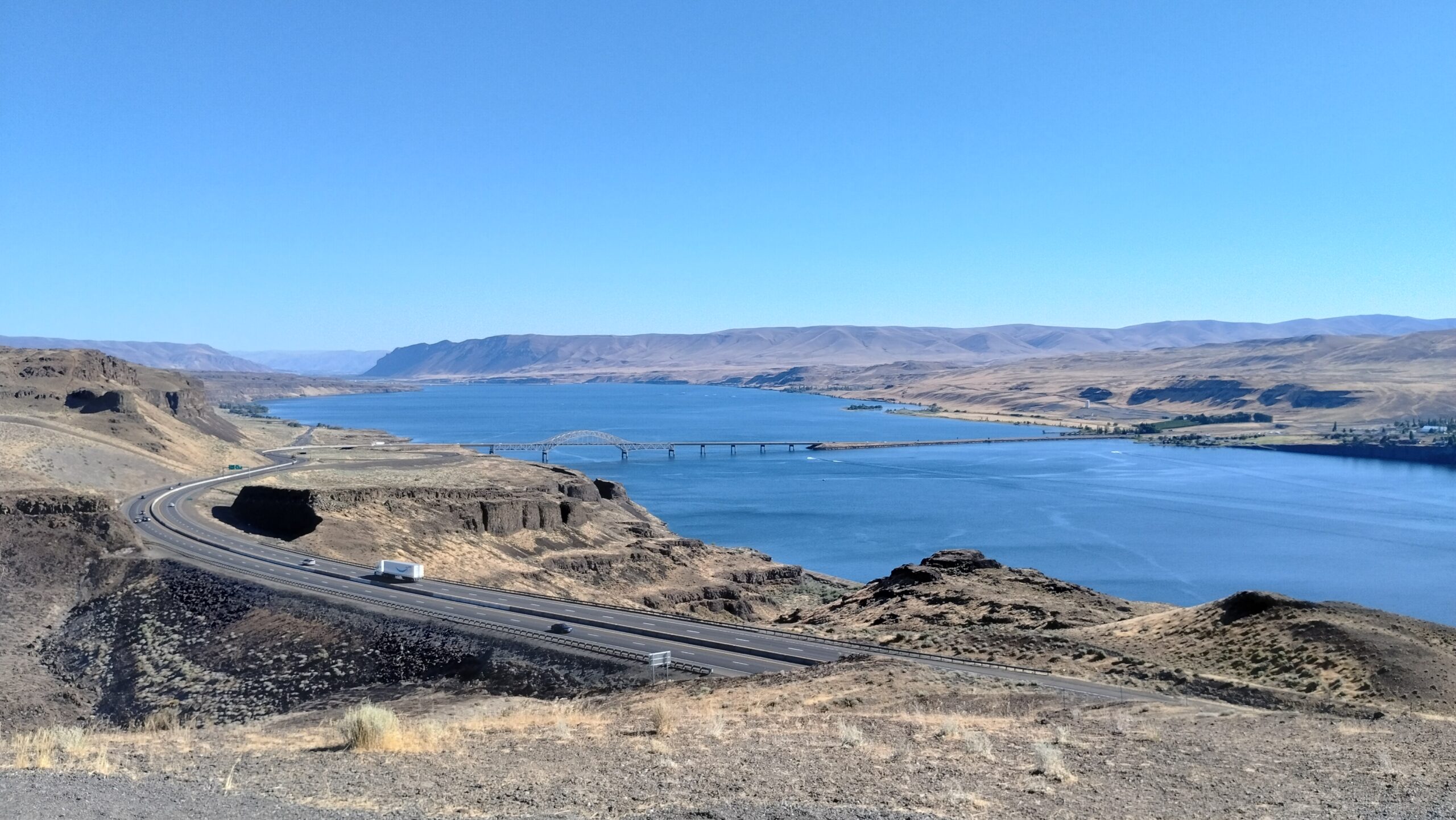
The Columbia is an extremely large river, but it runs through some of the driest and brownest country imaginable. I was really stunned by how much the land just dessicates shortly after leaving the Cascades and entering their rain shadow. The switch from wet and snowy coniferous forests to dry rangeland comes in under 30 minutes’ driving east on I-90.
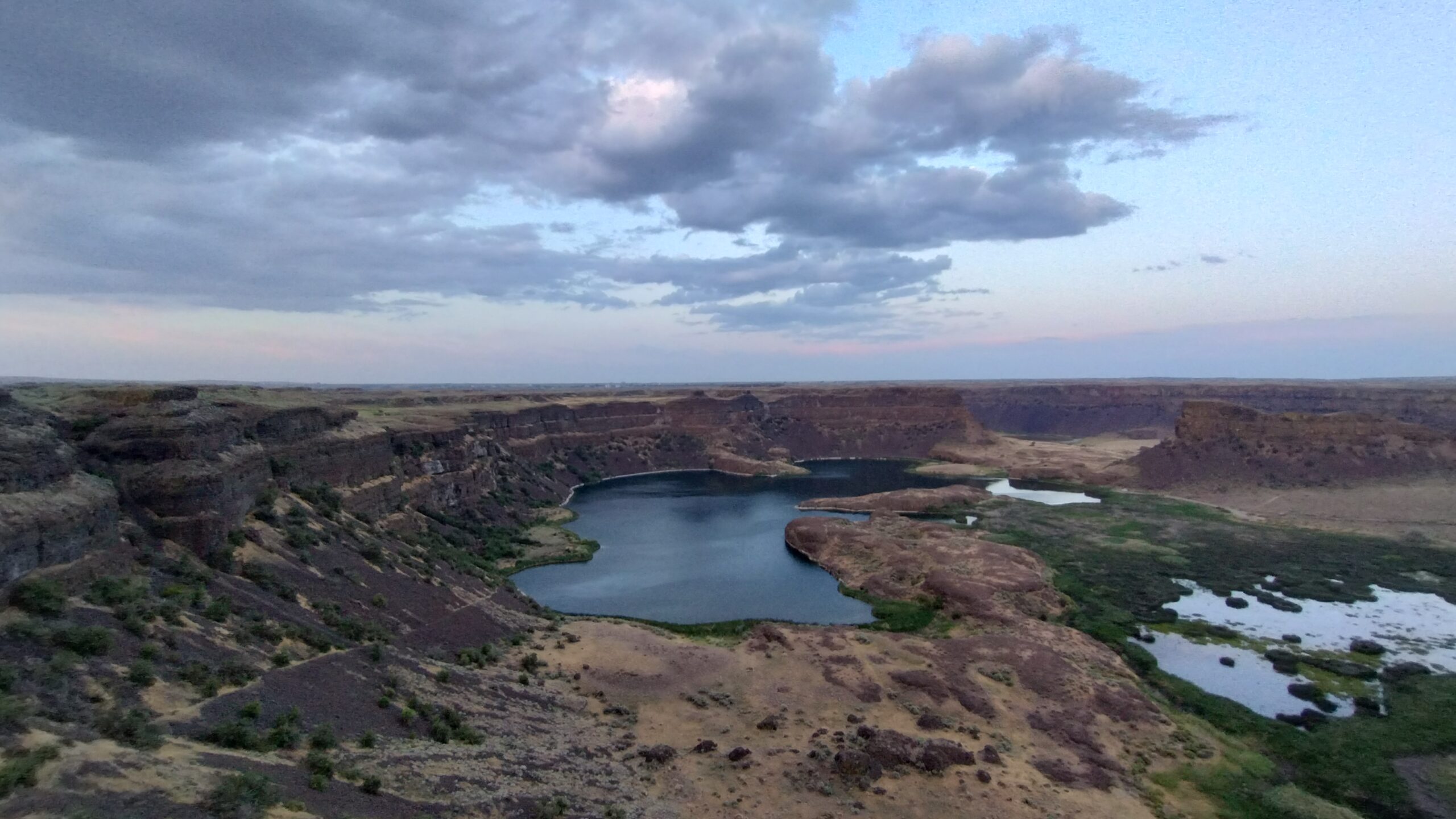
Dry Falls, a former riverbed of the Columbia several thousand years ago.
So in the original plan for this trip, after leaving Olympic National Park, I had intended to cross the border into Canada and head up to Vancouver, then Banff and Jasper National Parks. I ultimately decided to cut these and the other Canadian Forays in this trip (one up to Lake Winnipeg and Lake Nipigon, another stint on Point Pelee and Long Point in Lake Erie) for a variety of reasons:
- Job Stuff™️ (I don’t really want to put this online, text me if you want details).
- I don’t have any cell coverage in Canada and my stupid phone also doesn’t have wifi calling (I was lied to by Mint Mobile and Motorola that it did). This makes it impossible for me to contact and book campgrounds, get entrance tickets to parks, etc.
- I read online that you can’t transport Coleman fuel canisters over the border, and I couldn’t find out if the canisters sold over there have the same screw size or were instead some metric size, and incompatible with my stove. This would have made it impossible to cook over there.
- Exchanging money for Canadian Dollars was going to be a huge hassle that I just didn’t want to deal with.
- Jasper and Banff are waaaaaay the hell further out than Vancouver. I mean like, several days’ drive from the border.
Having a good road trip requires being flexible, and knowing when to cut your losses for sake of simplicity; that’s the call I made here when I decided to scrap the Canadian portions of the trip. And hey, like I have told the many LMH hopefulls who don’t get off the waitlist in time for a hike, the triails will still be there for you whenever you do make it out there some day 🙂
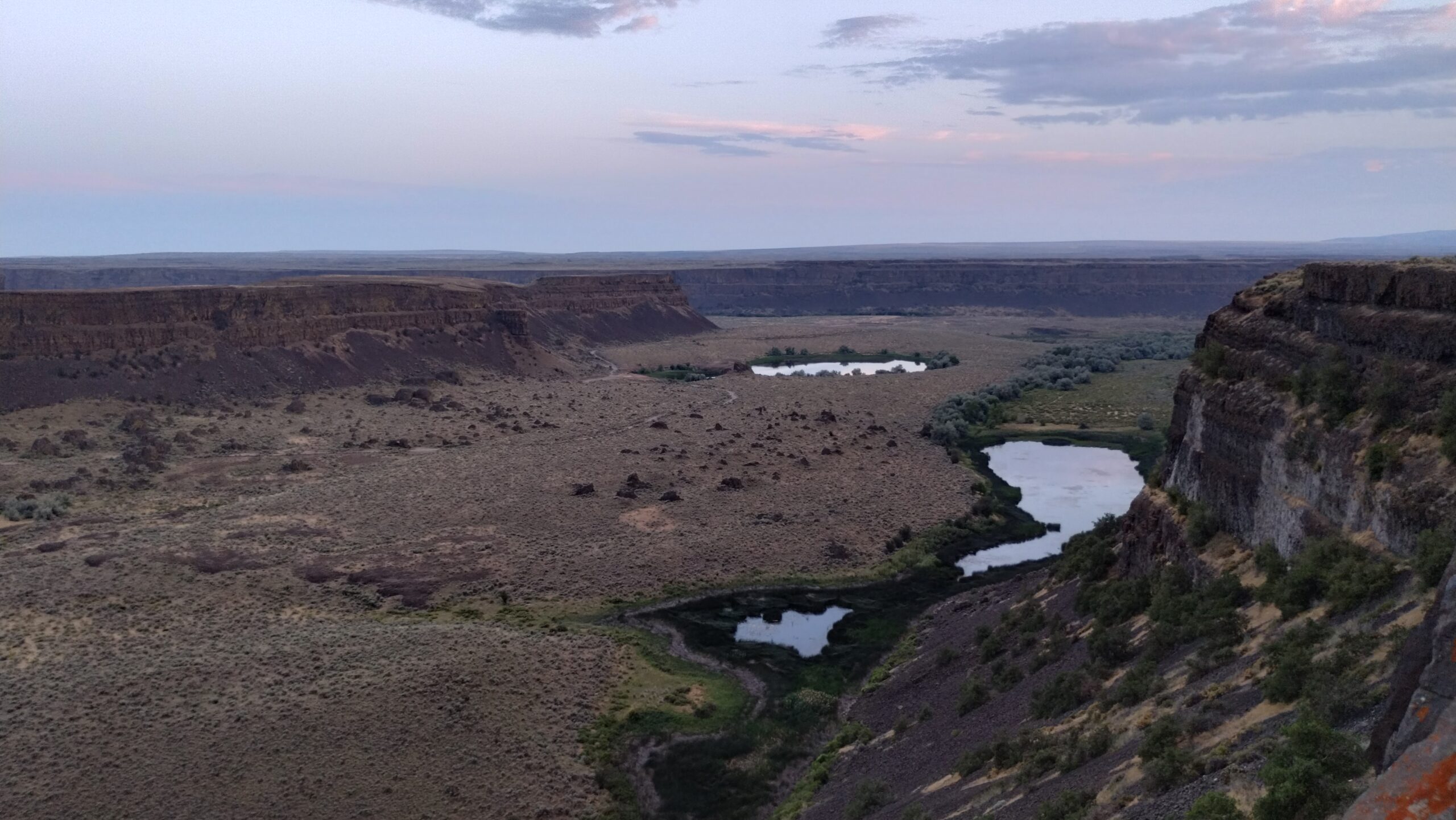
And so that’s how I ended up in Eastern Washington. I even tried to reach the San Juans on the recommendations of Collin, Ellie, and a Minus the Bear album, but literally every campsite, hostel bunk, and Airbnb was completely booked for several weeks (it was the week of the Fourth of July, so I really should have expected that). So… Oh well? Like I said, the Islands will still be there for me whenever I can make it back out there again.
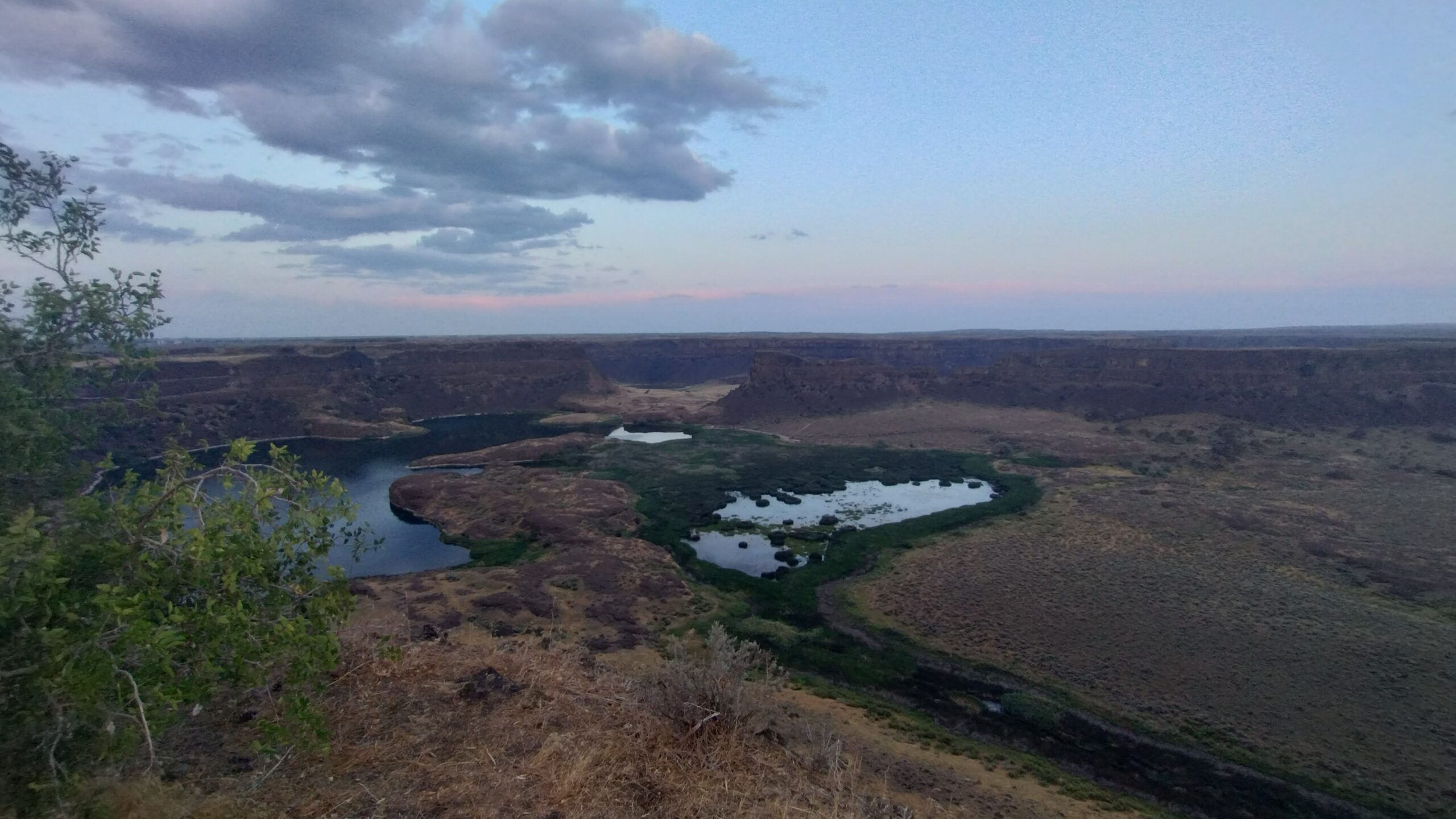
Unfortunately, there isn’t a whole lot to see in Eastern Washington, in which I was stuck for 3-4 days due to a booking error with some campsites. One thing you can see is the Grand Coulee Dam, the largest dam ever built in the United States:
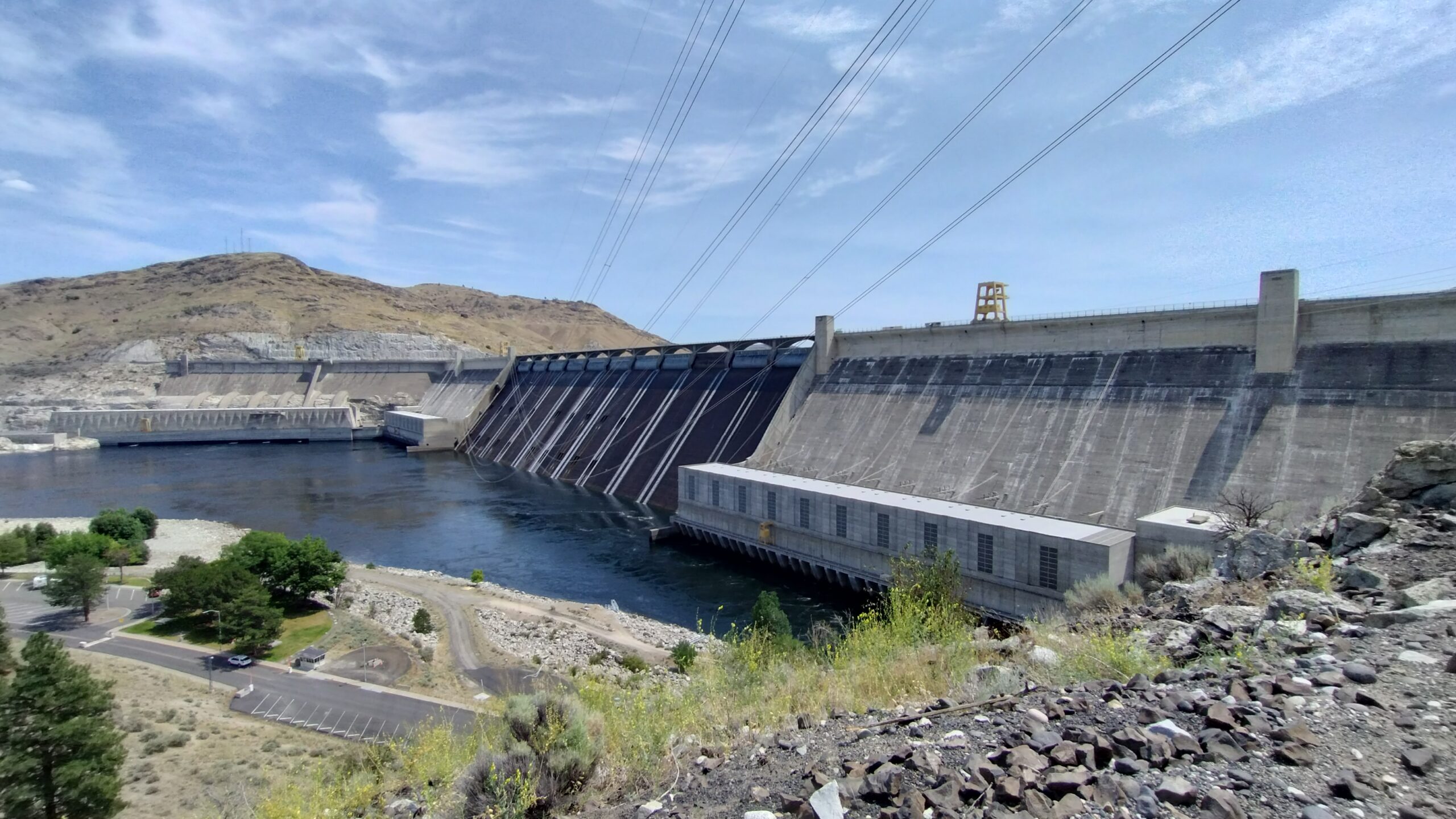
Woody Guthrie was right: biggest thing that Man has ever done.
The Dam is a stunning feat of engineering that doesn’t make sense to anyone but the engineers who designed it. The history of the dam is very complicated; originally it was designed as just a low dam for flood control, and not power generation. Mid-way through construction in the 30s, the design was revised to be a high dam twice the height of the original, with the intent of irrigating the Grand Couloir, a high and dry plain of nearly a million acres on the plateau above the Columbia River. But when WWII broke out and the dam had yet to be completed, it was again repurposed for hydropower and had an enormous generating capacity installed:
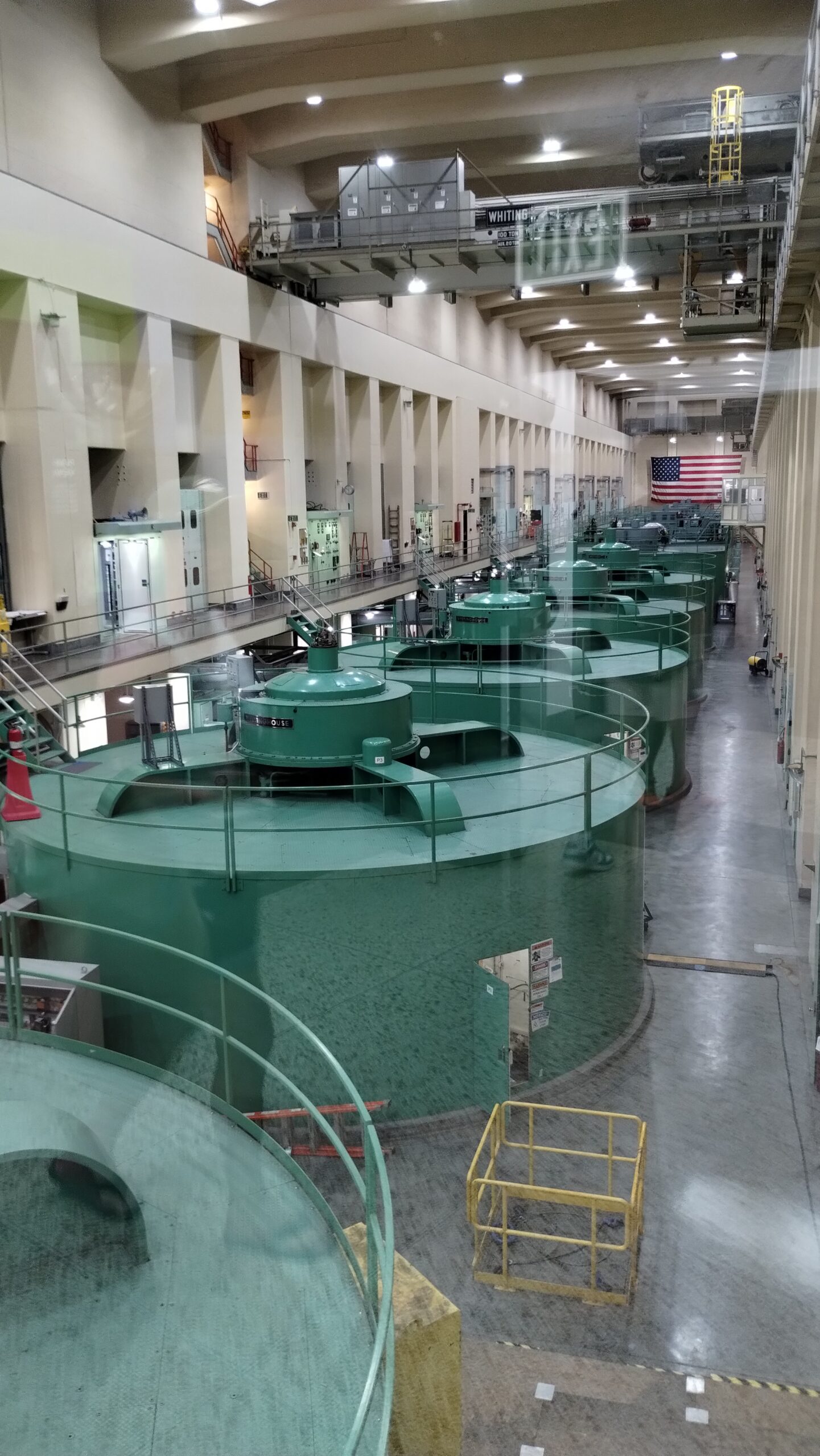
The generator room at Grand Coulee; most of these generators are not running.
The dam was not returned to use in irrigation until after the war was won, and the final piece of its history was to add an additional generating plant to the far side of the dam in the 70s, most of which never run.
This story raises so many questions that the tour guides couldn’t answer for me:
- How were they able to repurpose the low dam into the high dam halfway through the construction? You can’t just make a dam taller to hold back more water, it has to increase in width as well to resist the additional water pressure. A low dam built with the thickness needed for a high dam would have been wasteful, and it’s not obvious to me how you could make a dam thicker after its initial construction.
- The Columbia River was a famously seasonal river before the dam was constructed, receiving something like 75% of its annual flow in the four months after spring snowmelt began, and even the massive reservoir pool was not large enough to meter out this flow over the course of the year. Even during peak electrical generation during WWII, the generators at Coulee only spun for 5-6 months out of the year.
- Even the high dam wasn’t high enough to raise the water from the Columbia River to the Grand Couloir; the current dam requires a pumping station to raise the irrigation water another 300′ above the top of the dam go the Columbia Plateau. Why spend all that money building a high dam that doesn’t reach high enough when you could just build a larger pump to draw water from the pool of the low dam? Wouldn’t that be cheaper?
- The tour guides said that depite the dam having a generating capacity of 7+ Gigawatts (one of the largest installed generating capacities in the world), the electrical grid can’t handle that kind of generation and the all the generators rarely spin above 50% of their total capacity. So why go through the trouble of installing an entirely new generating plant in the 70s?
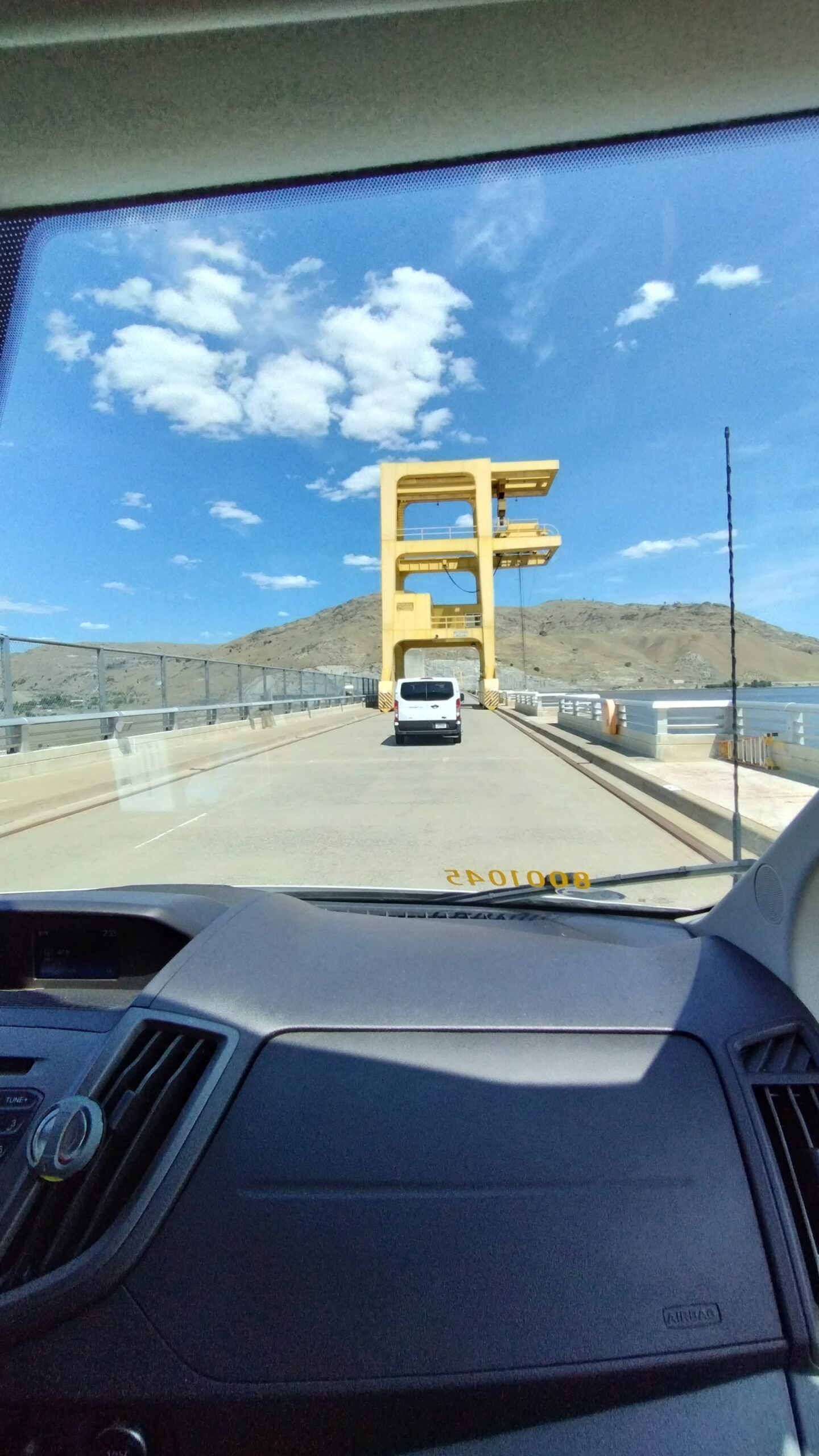
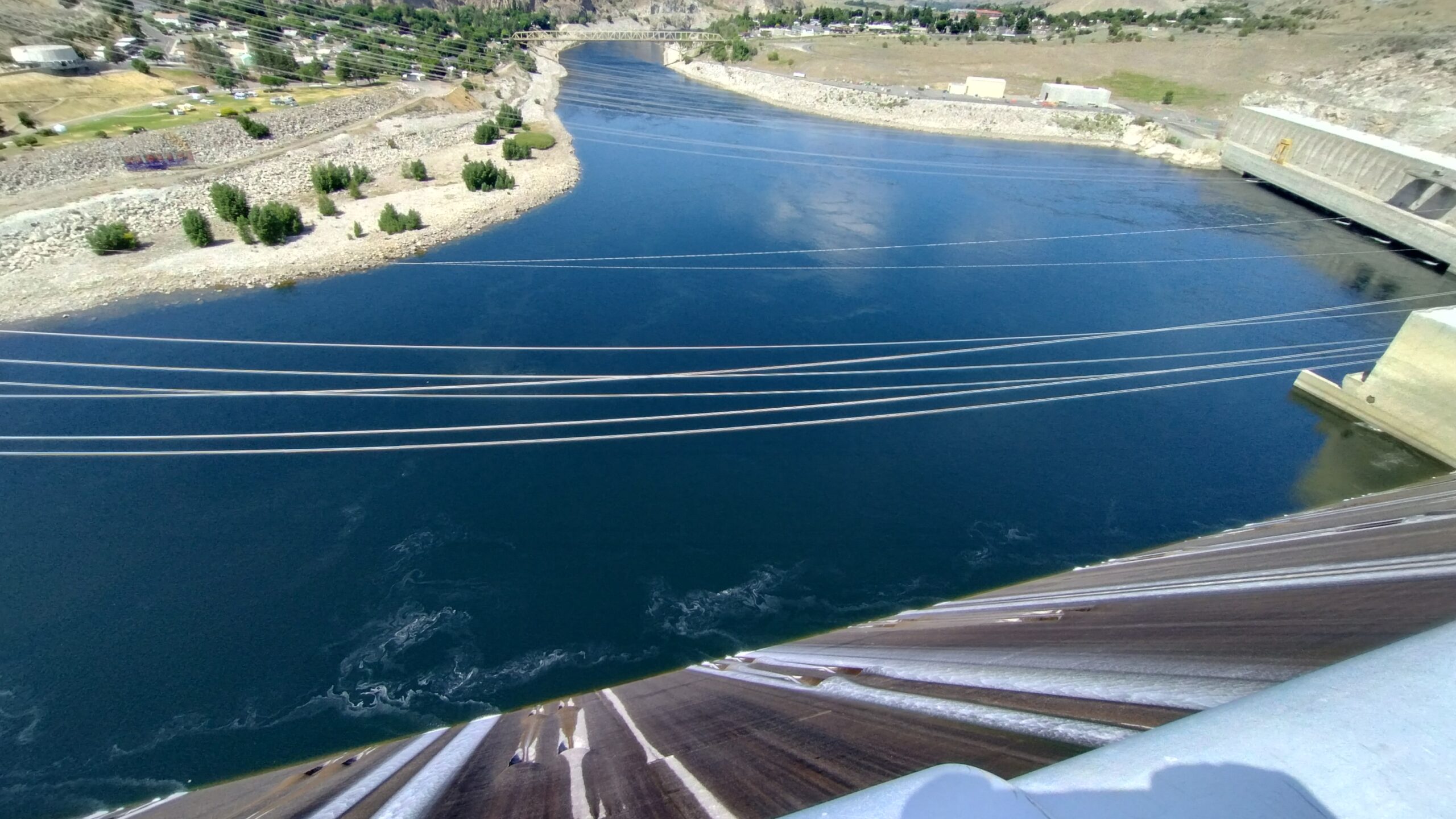
This dam holds back nothing but LIES.
For everything it was designed and redesigned for, at every stage, the Grand Coulee Dam seems like a really long way to solve a very short problem. I wish I understood it, but I just don’t.
But Grand Coulee does solve one big problem: where to have a baller Independence Day laser light and fireworks show? The answer: from on top of the dam:
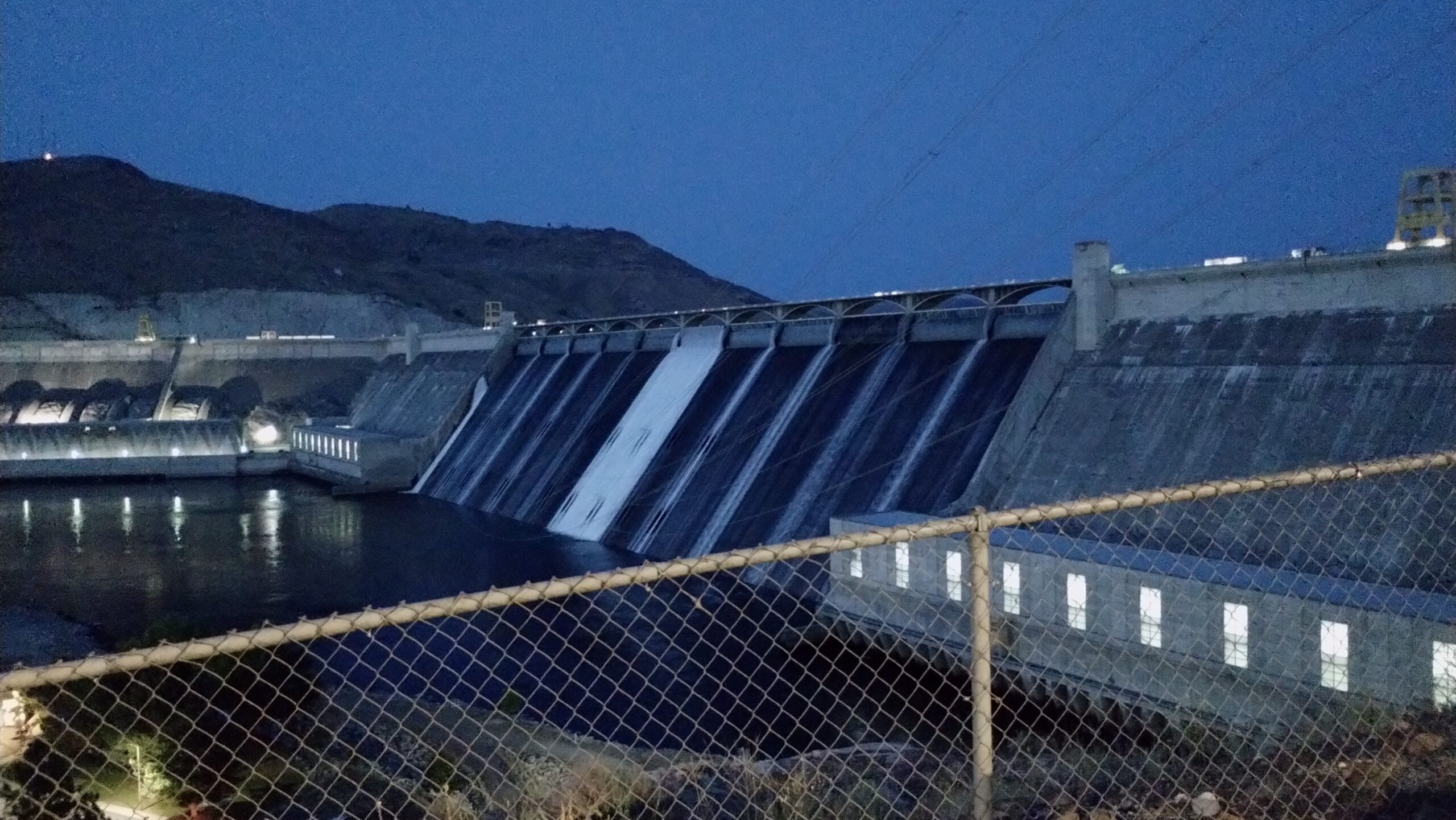
Ar first, the floodgates on the dam are opened one-by-one to create a great, white curtain of water across the dam:
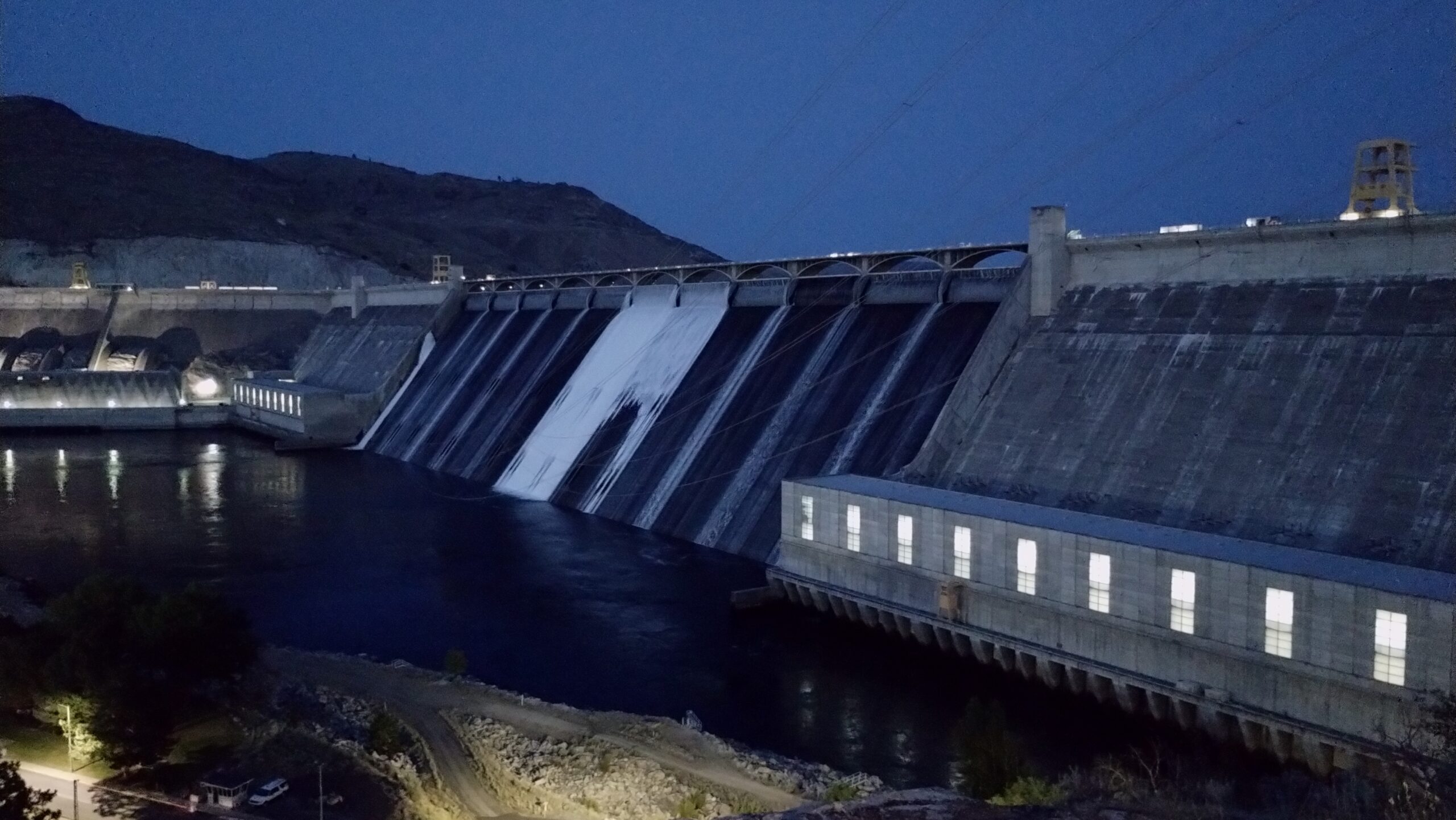
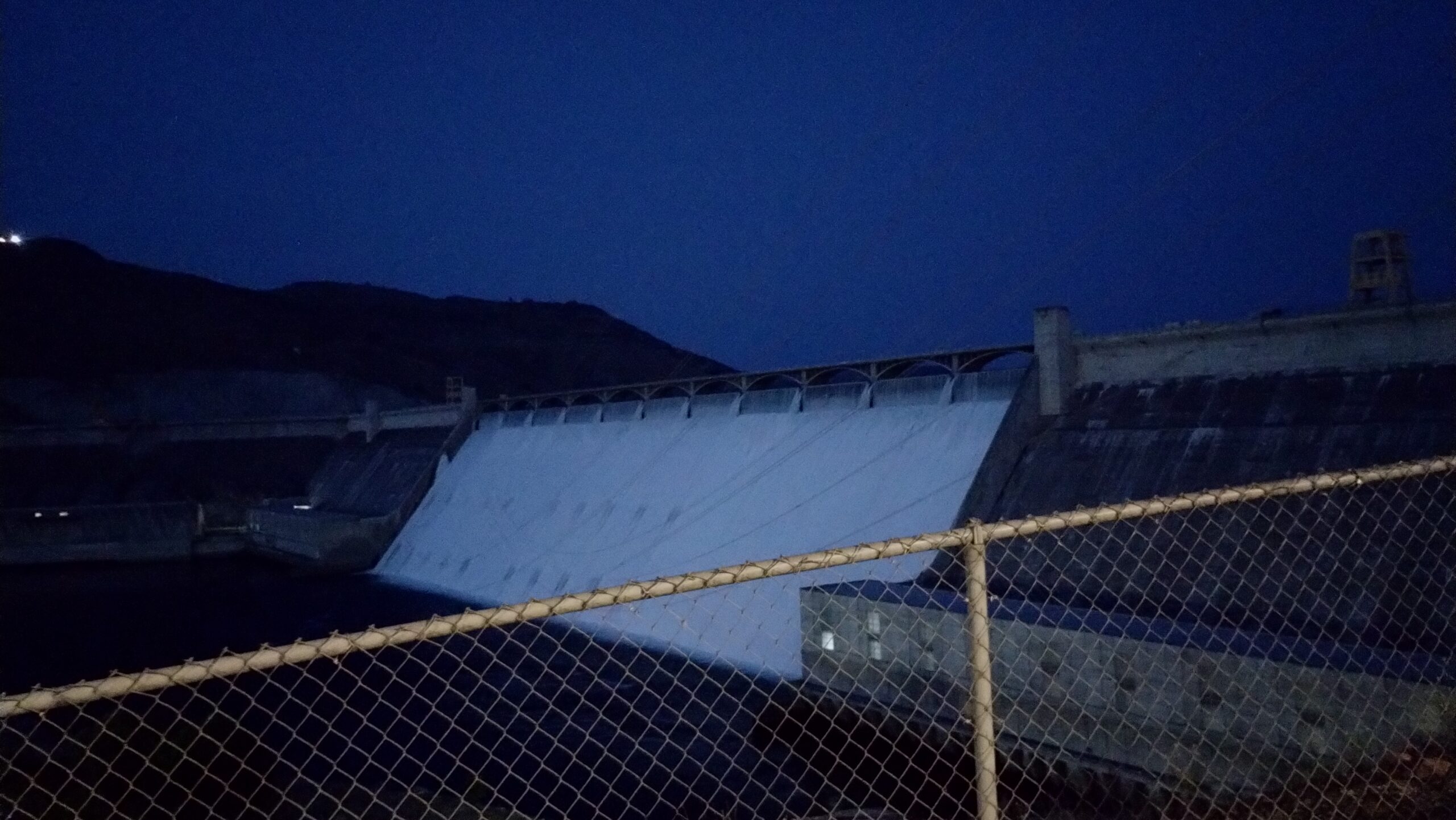
This creates an enormous “screen” of water perfect for displaying on, like an enormous drive-in movie theater scene. The show they played was a stunning history of the river, the dam, and the ways of life its construction changed.
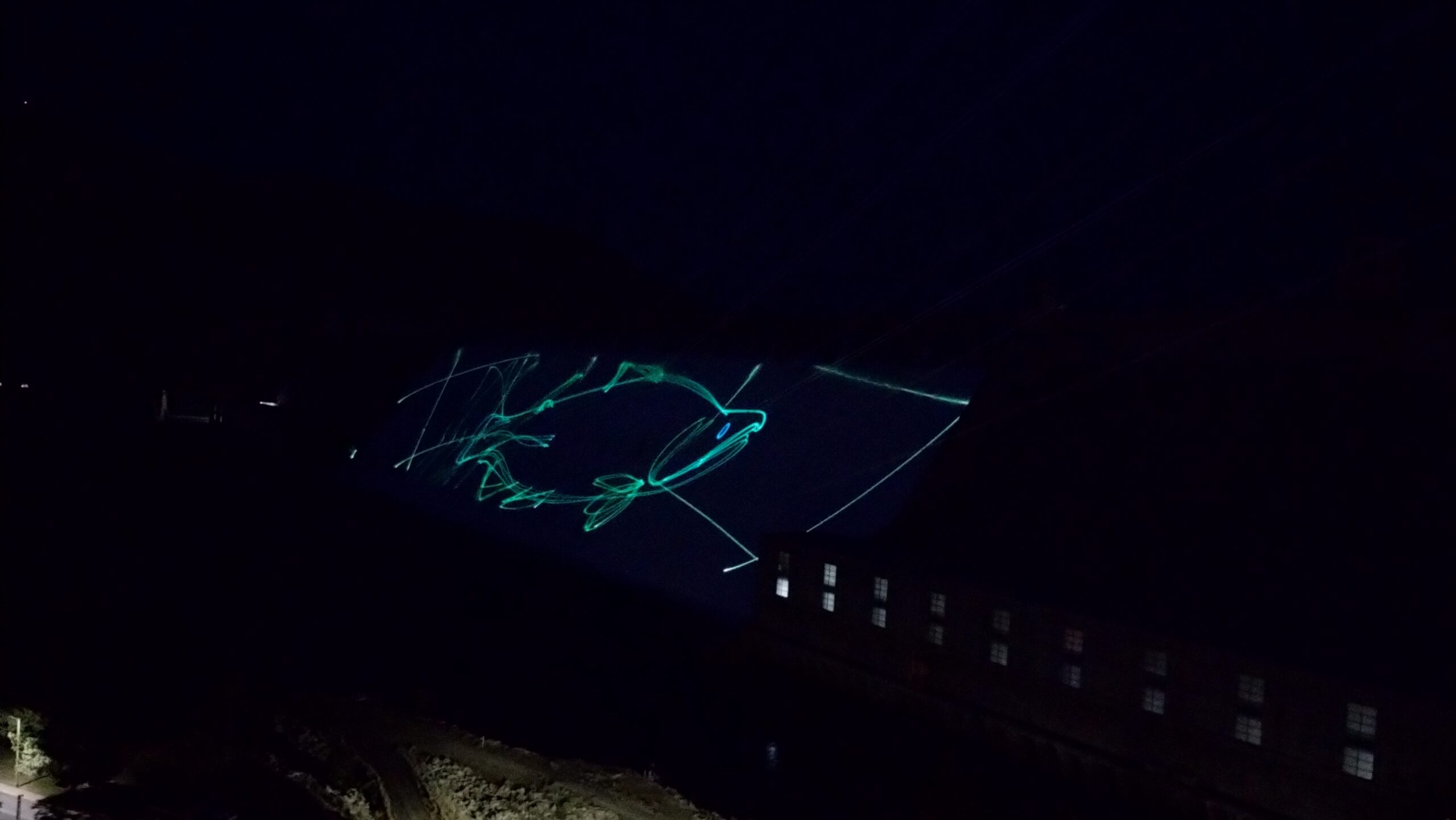
Like the salmon, who can no longer reach their ancestral homelands in the upper Columbia Basin.
And then the fireworks blasted off from the top, which of course need no explanation:
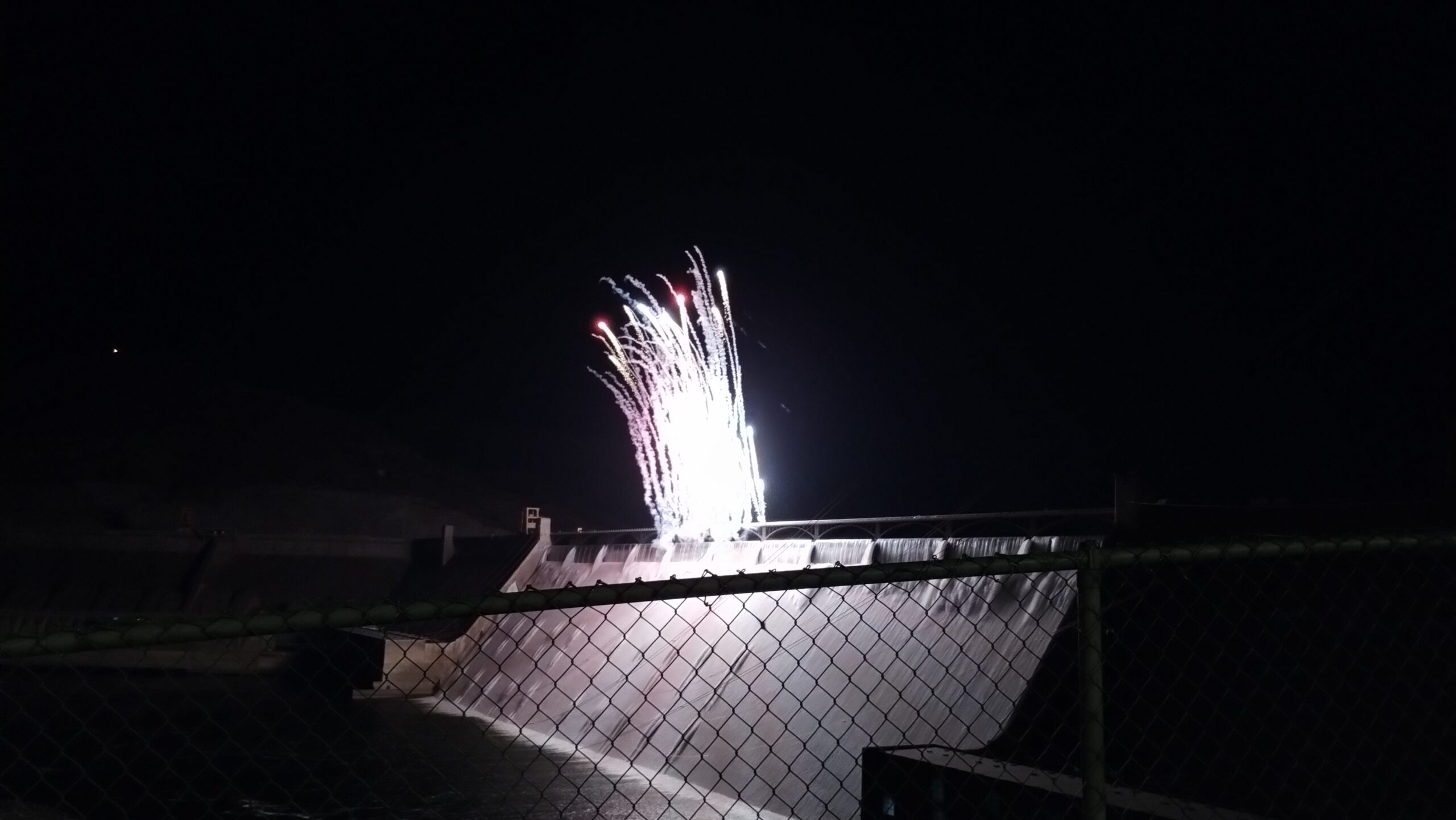
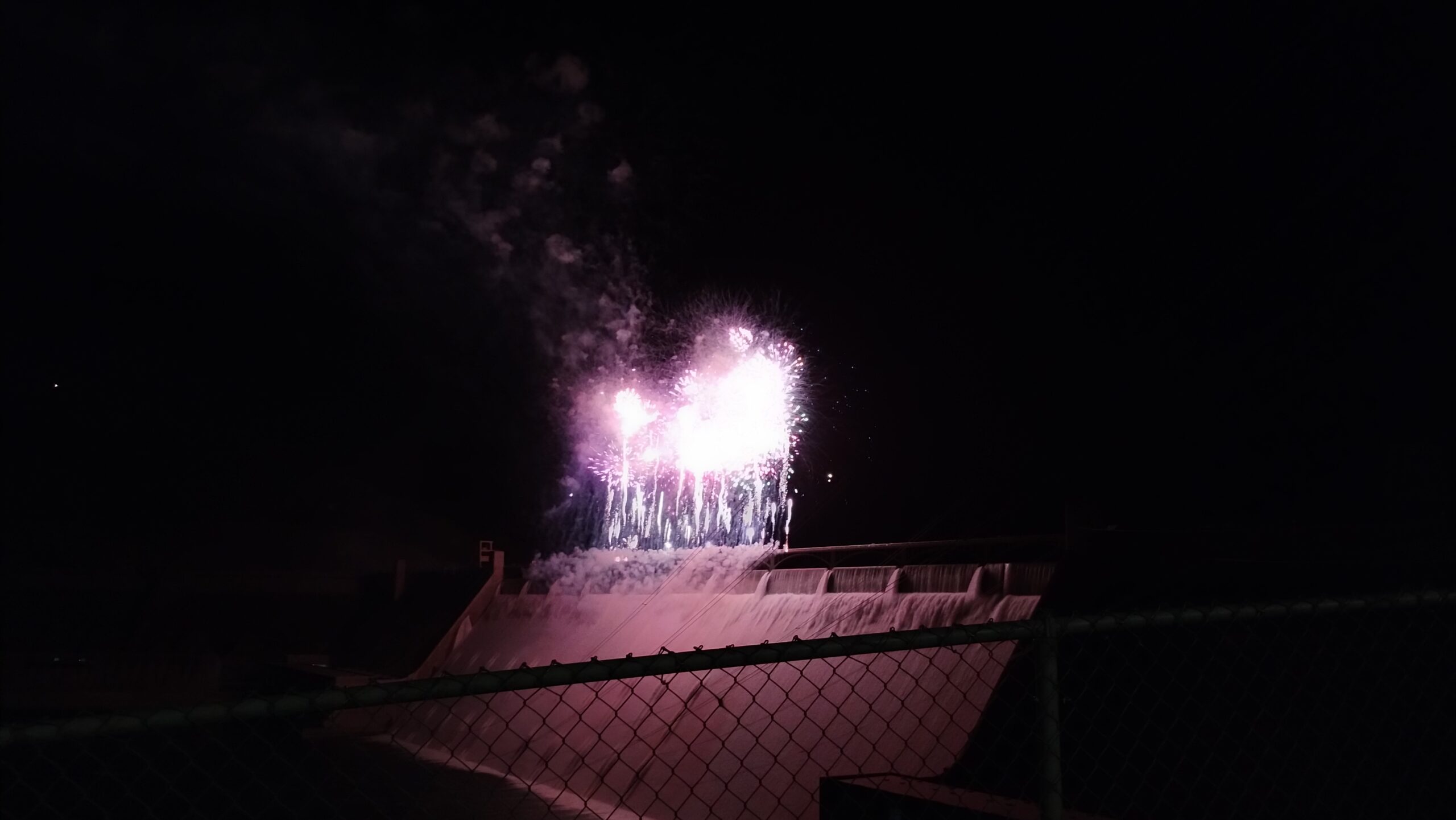
Yes, it was a nice Independence Day overall.
There wasn’t much else to do in Eastern Washington, and I honestly spent the fifth of July doing nothing much else but updating the blog and noodling around the small town with an RV Park and no stoplights. I did a lot of thinking then, and I can make that day not a waste by sharing some of those thoughts here on the blog:
To be completely honest, I’m getting kind of tired of being on the road. I’m seeing many interesting places, and I am enjoying all the places I’m seeing, but I miss home. 79 days and 12,000 miles is a long time to be away from your friends, and your family, and your support network. I am missing LMH very much, and the only thing I am honestly wishing for on this trip is that my friends were here to share all these sights and experiences with.
So with the currency, the camp fuel, and the cell service aside, I am glad to be cutting Canada (with apologies to Sarah and Chelsea) out of the trip, if only to be making my was back to DC a bit sooner. I was looking forward to places like Glacier, and Yellowstone, and Grand Teton very much, but now I am also looking forward to coming back home when all this rambling is done.
Without much else to do in town during the day of the 5th, I wandered the streets for a while at night. I will never cease to be amazed by how these small, plain-bound towns just end. You find yourself wandering down a sidewalk in what seems like a perfectly suburban neighborhood: narrow and deep lots, single-family homes with toys littering then biweekly-trimmed front yards. Foggy, orange streetlights barely overlapping, Venn Diagraming the interpersonalities of the souls just beyond the fences. And you are hopscotching through the lifelights along the pavements cracked with crabgrass, feeling it all, knowing no one, and all of a sudden it just Stops.
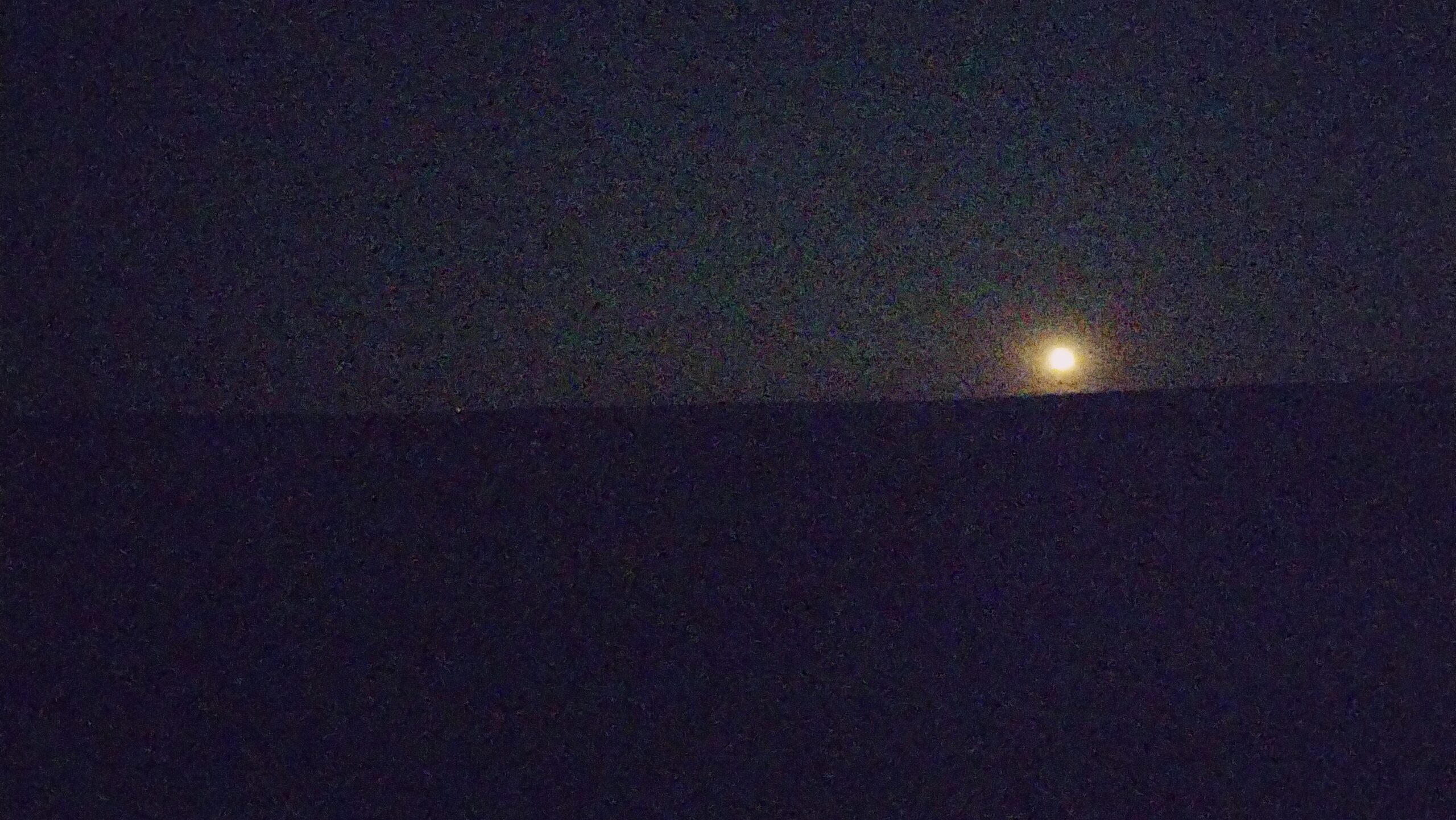
It’s just over. The town ends, and you are staring into a great sea of land, hillocked and tided by the endless crests of the Earth, rolling with your gaze into… Where?
Some faraway sea?
Some distant foreshore, in a plains town another world away?
Why don’t these towns, these people, these existences keep going? Why are they not abutted by woods, or makes, or suburbs, or cornfields, or anything?
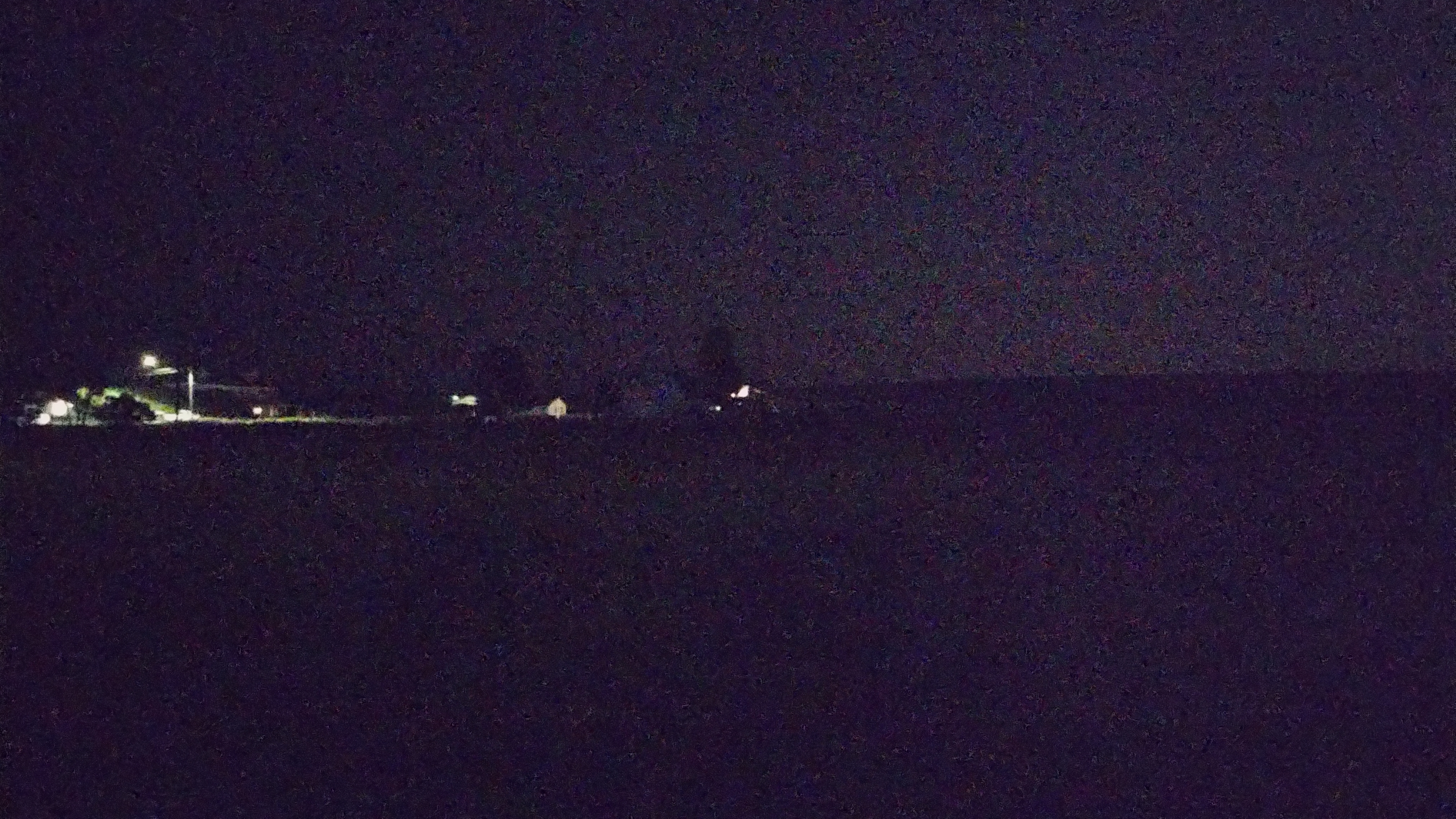
I wish I knew. In my hometown, walking in any cardinal direction would eventually take you somewhere, into a forest, or a field, or a neighborhood, or a lake. These things switched and swapped with one another all the way across the state until you were staring into a Great Lake, or the state line, and then you were really staring into nothing (no apologies to the Ohioans and Hoosiers reading this post).
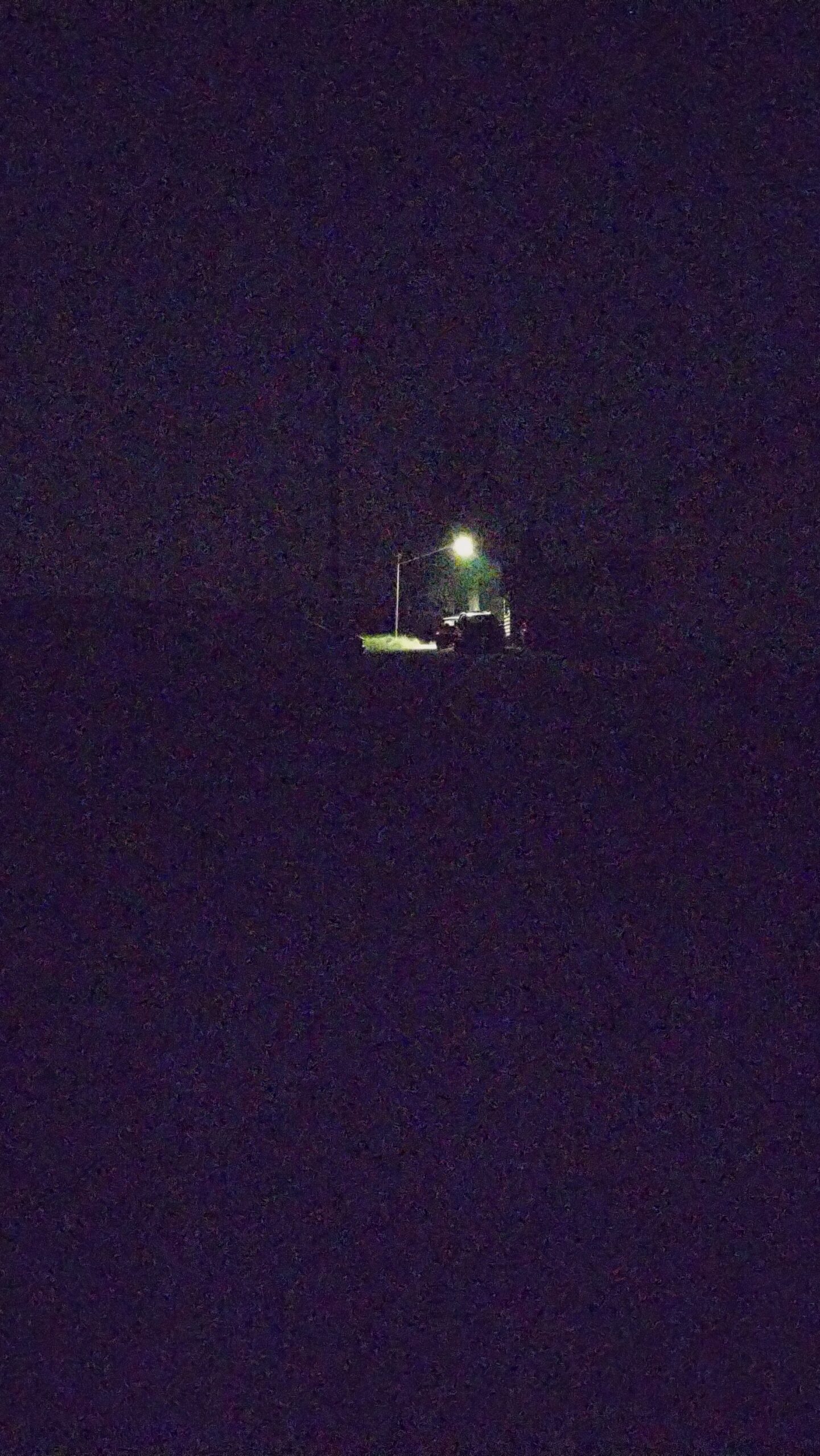
But here, on the plains, it just ends. And the roadways from town are just seaways, they are nothing more than sightlines into horizons. They are inextant. They are nondescript. They go from nothing into nowhere, and only your taillights prove that you exist in it all.
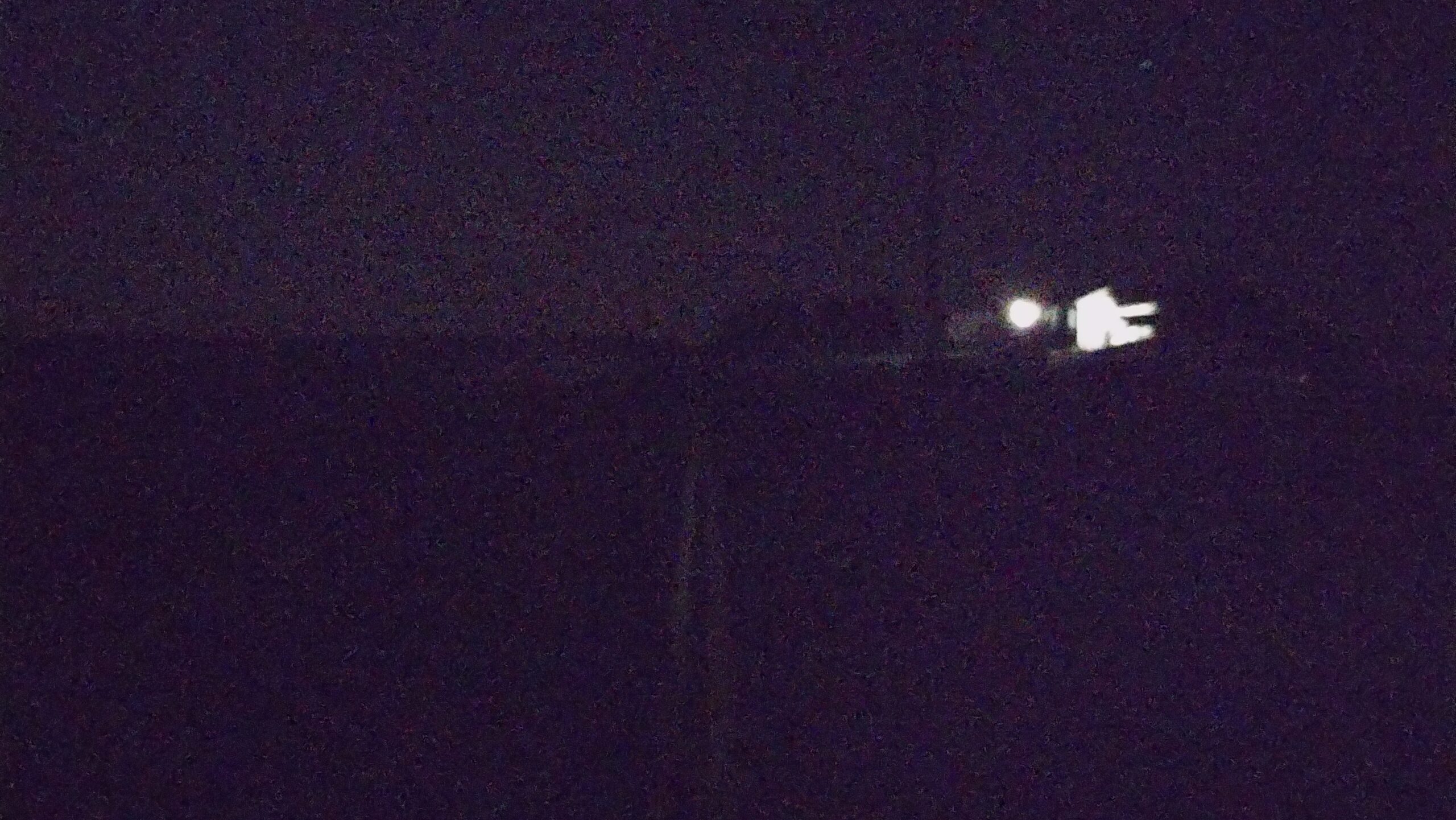
That’s all for now,
Stay well everyone,
Evan 💙